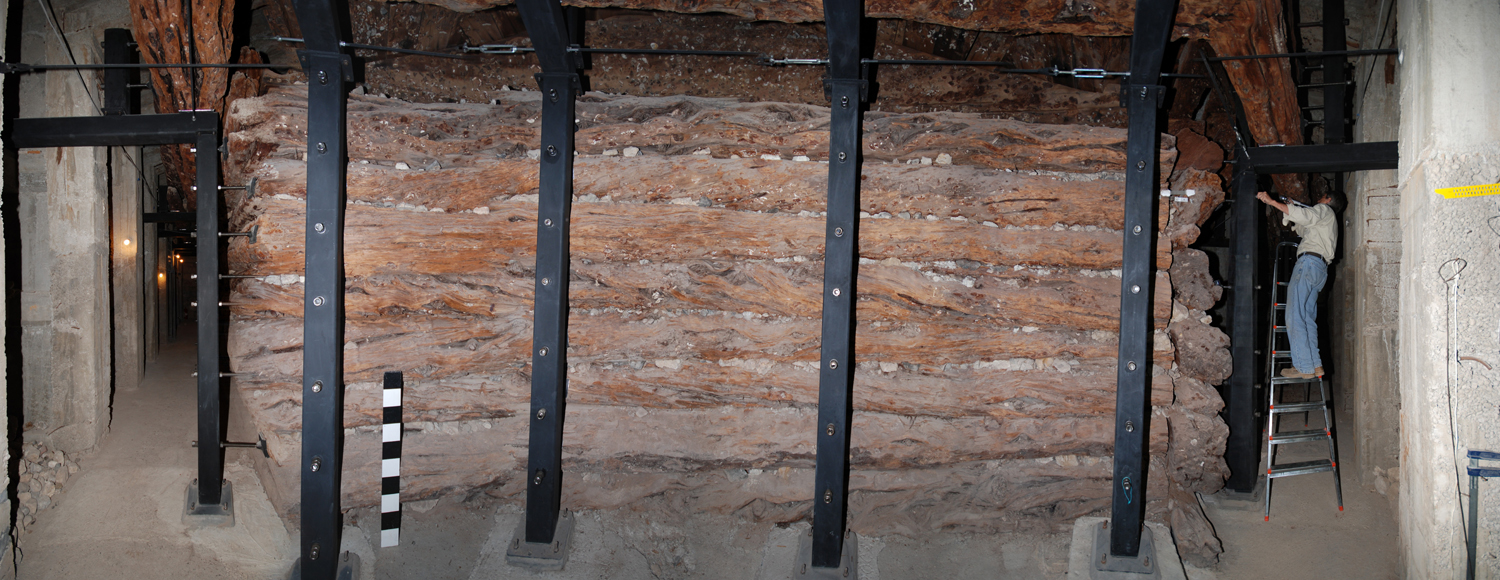Nailing down the floating East Mediterranean chronologies
gordion_midas_mound_tumulus_casing.jpg

The tree-ring chronology partly based on the timbers from a burial chamber in the ancient city of Gordion is a key piece in dating the civilizations of the eastern Mediterranean in general, and in particular it spans the possible dates for the devastating volcanic eruption of Thera, the subject of intense debate. But although the relative dating of this chronology is clear, it has been what is known as floating — not securely anchored to true calendar dates. Now Charlotte Pearson from the LTRR is primary author on a paper in Proceedings of the National Academy of Sciences which nails down this chronology to an exact calendar-dated range; her co-authors include several other LTRR people, Matt Salzer, with Peter Brewer and Peter Kuniholm.
The article uses a combination of different techniques to refine the dating. Radiocarbon dating of single samples is far from being accurate to a single year, and the raw measurements need corrected by reference to sequences of reference measurements from tree-ring dated wood samples, known as calibration curves. Some increase in accuracy is possible by taking several samples whose relative dates are known, and comparing them to the shape of the calibration curve, a process known as wiggle matching; however there are periods when the shape of the calibration curve does not allow an unambiguous match, and until recently neither the sample dates nor the calibration curves were based on annual measurements. Improvements over traditional wiggle matching have become possible with truly annual radiocarbon measurements, and the discovery that in some years astrophysical events produced huge annual radiocarbon excursions, which could serve as markers to date sequences of individual tree ring measurements. None of the most spectacular excursions coincided with the Gordion chronology, but annual radiocarbon measurements from wood included in the chronology did show patterns at a finer level of detail than the longer-scale features in the calibration curve. Annual radiocarbon measurements from the absolutely dated tree-ring chronologies using bristlecone pines in the White Mountains of California and oaks from Irish bogs provided reference sequences that could be used for comparison with the Gordion measurements.
Large volcanic eruptions can affect weather on a global scale, providing a mechanism for connecting growth anomalies in the Gordion tree rings with anomalies in very distant absolutely dated chronologies. Gordion is located in Turkey, where large eruptions tend to increase rainfall, favoring the formation of wider tree rings; however high up in the White Mountains of California, large eruptions tend to cause sudden freezes at the end of the growing season, producing the distinctively disrupted bristlecone pine growth known as a frost ring. So matching wide rings in the Gordion sequence with dated frost rings from bristlecone pines provides another synchronization technique, completely independent of the fine-scale radiocarbon pattern matching.
Gordion is a few hundred kilometres downwind from Thera, so could plausibly have seen some direct local effects from the eruption, possibly recorded as a chemical signature in the tree rings. X-ray fluorescence (XRF) is an analysis technique that can estimate the abundances of elements in a sample by illuminating it with an X-ray source and measuring the characteristic X-rays this causes the sample to omit. Some XRF machines can scan the sample under the X-ray source, producing a two-dimensional map of where particular elements are concentrated or depleted. With unusually wide rings corresponding to large eruptions, the XRF map from a Gordion sample showed a potential effect from Thera in anomalously depleted calcium in the ring for 1560 BC.

